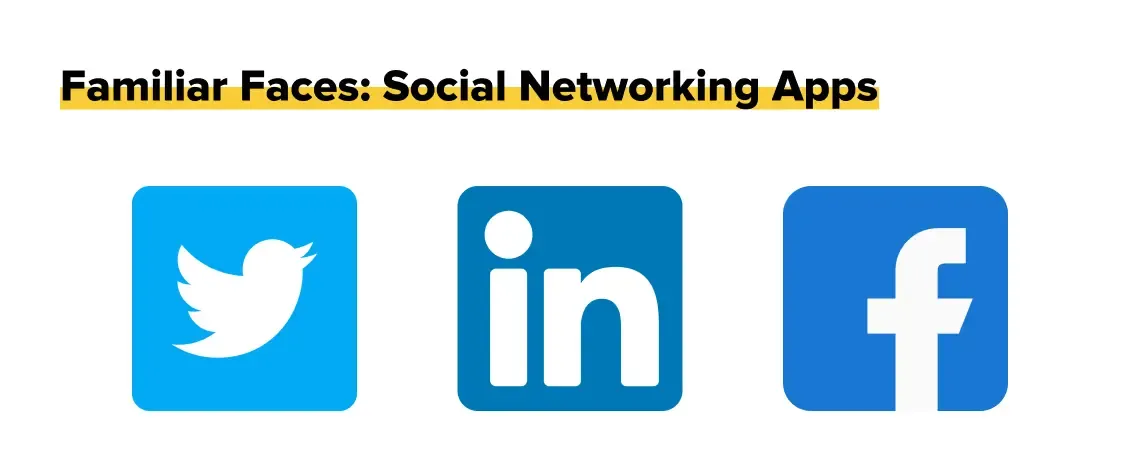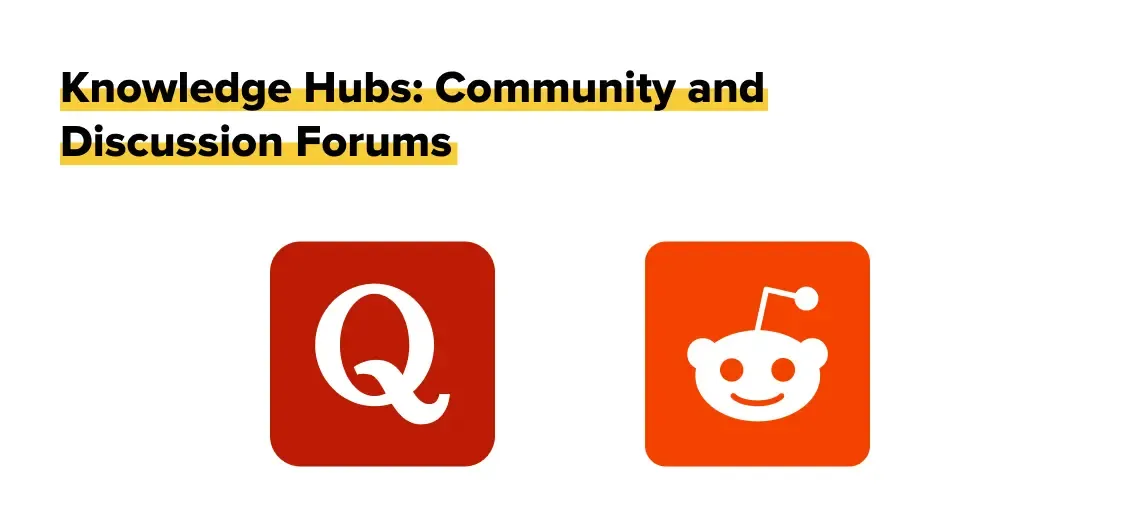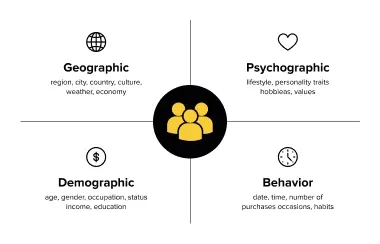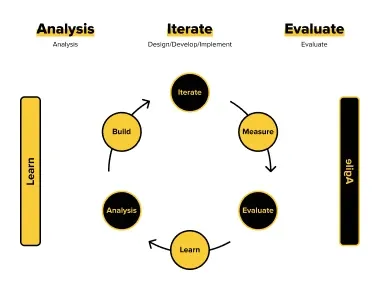The number of social media users worldwide is rapidly increasing: from 4.72 to 5.04 billion in a year. And this is far from the end point. At first glance, it seems that the market is saturated, and Facebook, Reddit, Instagram already cover a wide range of user needs.
However, practice shows that with the emergence of new social media apps, new needs and audiences arise. Indeed, recently there have been quite a few of them: X (Twitter), Mastodon. But perhaps the most hyped one is Threads, which received 2 million registrations within 2 hours of launch and 100 million by the 5th day. This is truly impressive.
Only time will tell if Threads can retain its audience. But this is already a precedent - there is room for a new app in 2024.
Are you ready to challenge the current giants and build a social media app that brings people together around common interests and values? Well, then you've come to the right place.
Want to create a platform focused on community: is it worth it?
The social media apps industry in 2024 is undergoing remarkable changes. We can consider ourselves lucky because we have the honor of witnessing this in real-time.
While Facebook and Instagram continue to dominate, there is a growing desire for more niche platforms focused on community. But why? Let's consider the key reasons and benefits of creating such applications.
Deeper connections
People crave a sense of belonging and meaningful interaction beyond just likes and comments. Specialized platforms strengthen connections by bringing together people with shared interests, hobbies, or goals.
Targeted content
Specialized communities cater to specific interests, ensuring that users receive content that is truly relevant and valuable to them. This eliminates the information overload often experienced on broad social platforms.
Enhanced engagement
A shared focus fosters a more engaged user base. People are more likely to actively participate in discussions, share valuable ideas, and build genuine relationships within a niche community.
Expanding creator opportunities
Large social media platforms often feel impersonal and can make creators feel like cogs in a machine. Specialized communities enable direct communication with their audience, building stronger relationships and receiving valuable feedback.
Promoting Innovation
Niche communities are more likely to generate new ideas and trends. Thanks to their shared focus and passion, users are more likely to experiment, collaborate, and push boundaries within their niche.
Nevertheless, the success of Reddit or Discord demonstrates the power of niche communities and the rationale behind app development costs. They managed to create a dedicated user base when others thought there was no need for another social media platform.
Deep Dive: Exploring social media app types
The world of social media is a vibrant ecosystem filled with potential. Well, it's time to dive into the diversity of these platforms. You might ask, why? Understanding the different categories and what users expect from each app type is enough to create a truly innovative social media experience. So buckle up and get ready to explore!
Building a Community-Focused Social Networking Platform

Twitter, LinkedIn, and Facebook are certainly well-known to you. These Social Networking Apps are often positioned as event apps, as they keep us informed about the lives of those we care about. Moreover, they are powerful tools for exchanging news, keeping users up to date on everything.

Looking for an outlet for your visual talent? Media Sharing Networks are the gateway to the world of creative self-expression. YouTube, Vimeo, or TikTok allow you to share photos, videos, GIFs, and more, turning your smartphone into a mini production studio. Media Sharing Networks are vibrant communities where users interact with like-minded individuals and recognize the power of visual storytelling.

Consumer Review Networks, such as Yelp and Trustpilot, are the voice of people in the digital age. Through them, users have the opportunity to share their experiences with companies. From glowing recommendations to cautionary tales, Consumer Review Networks provide valuable information about the real-life experiences of ordinary people.

Think of Quora or Reddit if you want to ask questions or share experiences. The main goal of social media app developers is to create platforms that function as online knowledge markets, fostering lively exchange of ideas and creating a sense of intellectual community.

Web services like Pinterest or Flipboard are more than just media platforms; they are virtual treasure troves of inspiration. It may sound too grandiose, but with Content Curation Networks, you can truly transform the vast expanse of the internet into a meticulously organized mood board reflecting your unique interests and passions.

Tumblr and Medium are popular social media platforms among those eager to publish their own content and create blogs. Whether you're an experienced writer, novice photographer, or anyone else who wants to tell a story, these platforms provide the tools and audience to share your unique perspective with the world.

Not all connections on social media are the same. Interest-Based Networks cater to specific passions and hobbies that enrich our lives. This includes, for example, Goodreads for bookworms or SoundCloud for music enthusiasts.
Understanding categories and user expectations, you will be able to build a social media app from scratch that truly stands out.
From Idea to App Launch: Crafting a Winning Social Media App Development Strategy
The social media landscape is a battlefield. Popular social giants fight for user attention, while innovative niches claim their own territories. Which side of the barricades are you on? Here, we've gathered a few tactical tips to help you quickly navigate the social media app development process.
Understanding Your Ideal Customers
By investing time in audience research and creating detailed user personas, you'll gain the information necessary for successful social media application development. And here's why:
Individual interaction with the user. Knowing interests, online behavior, and collecting personal information like age or gender, you'll be able to develop user interaction that resonates and maintains interest.

Effective Marketing. Understanding your target audience will enable you to conduct targeted marketing campaigns. If successful, you'll reach the right people through the right channels. It's all about multichannel engagement.
Content Strategy. Knowing what content your users desire allows you to select and encourage the creation of content that contributes to the quality and quantity of community growth.
Ultimately, Target Audience Analysis is crucial for quality building social media apps. Target demographic indicators ensure that your program serves a specific group, promoting user engagement and loyalty.
Strategies for Profitable Growth
Creating a social network app means needing a clear understanding of how it will generate revenue. Let's explore the most popular profitable business models.
1. App and promote
Integrating targeted advertising into the app will generate revenue based on impressions, clicks, or conversions. Unfortunately, this model requires a large user base to be financially viable.
2. Subscription model.
Offer premium features, exclusive content, or an ad-free experience for a subscription fee. This model thrives by providing significant value to justify regular payments.
3. Freemium model.
Provide a basic, free version with the option to upgrade for enhanced features. With the app free of charge, users can try before buying, potentially increasing the conversion rate.
4. In-app purchases.
Selling virtual goods, digital items within the app, works well for apps with features that users can interact with and spend money on.
5. E-commerce integration.
If you choose this model and allow creators or companies to sell physical products directly through the app, you'll benefit from a niche community with strong buying intentions.
! Choosing the right revenue model depends on the target audience, their spending habits, and the values of your network.
Standing Out from the Crowd with a Unique Selling Proposition (USP)
In the saturated social media environment, the ability to stand out is crucial. A strong USP clearly defines what sets your network apart and why users should choose it.

To create a compelling USP, consider several points.
1. Carefully analyze existing social media platforms: what are their shortcomings? Why did users stop using the social media?
2. Do not try to compete with social media giants. Instead, think about serving a niche using your app and special features.
3. Offer unique characteristics and capabilities that will make the platform stand out from others.
4. Clearly articulate the value the network will provide and the problems it will solve.
By developing a clear USP, you achieve two goals: giving users a reason to choose your app and creating a community.
Navigating the Social Media App Development Process
Creating a social network app is not an easy task, but it is possible if you follow the right steps.
Unlocking App Market Insights and Competitive Advantages
A successful social media site or app thrives in a specific market niche. Conducting thorough market and competitive research is essential for identifying this niche and ensuring it fills a gap in the existing landscape.
How to Approach Research Effectively?
1. Define the Scope and Target Audience
Start with your interests, identifying your own online frustrations or unmet needs. Next, move on to audience characteristics:
Who will benefit the most from your app?
Consider demographics, interests, online behavior, and pain points.
2. Research Social Media Landscape and Competitors
Analyze both popular and smaller social platforms to understand their:
Strengths and weaknesses.
Types of content and communities they serve.
Analyze direct and indirect competitors, examining the shortcomings and benefits of social apps from the perspectives of features, user experience, and community engagement.
3. Analyze Quantitative Metrics for Social Media
To understand industry trends, user demographics, and social media app usage patterns, it’s advisable to use social reports from reputable research firms. Additionally, periodically conduct surveys to collect data and statistics directly from your target audience.
4. Refine the Niche
Finally, it’s time to bring all the information together. To identify the target niche, start with audience research, market trends, and competitor analysis.
Validate the idea: Is your niche large enough to support the app?
Are there enough potential users who have a strong need for your solution?
Remember! Any social media app isn’t universal, so focus on the problem, not the platform. Identifying a specific market gap, make sure your social media app aims to fill it.
Tech Stack Selection
The chosen technology stack is fundamental, as it affects everything from the speed of social media application development to user interaction. To choose the right tools according to the app’s needs, first determine if you need real-time features, such as chat or livestreaming. The answer will influence your choice of programming languages and frameworks.
Additionally, consider the following factors:
1. Target Platforms: Will your app be available for Android and iOS? Cross-platform development frameworks, like React Native or Flutter, save time and resources.
2. Scalability: Cloud platforms like AWS, Google Cloud, or Microsoft Azure offer infrastructure that scales with the user base.
3. Complexity of User-Generated Content: If users will share images, videos, multimedia content will require robust internal storage and processing capabilities.
4. Security: Social media apps handle sensitive user data, so the technology stack should be built with reliable encryption and data protection in mind. Choose a tech base that suits your team to ensure efficient development and minimize training needs.
User Experience: Building Bridges, Not Walls
If your app doesn’t resemble a bustling town square, it’s time to change your approach to user engagement. Here are the features of any social media app that the audience looks for in an application
Key Features | Advanced Features |
|
|
By strategically implementing the described features, your app will surely find its place in the sun.
MVP Development
Before starting the launch of a social app with all the bells and whistles, it’s crucial to validate your concept with real users. This is where the Minimum Viable Product (MVP) comes in – a streamlined version of the app focused on the features most valuable to your target audience. Think of the MVP as a prototype, a first draft – it doesn’t have to be perfect, but it should be functional and provide enough user interaction to garner valuable feedback.
How to create one MVP and test it?
Prioritize core features (up to 5).
Create a simple user interface. Make sure it provides a smooth user experience (and thus, the social media app works without errors).
Hire testers by offering them incentives for participation.
Provide users with clear instructions on what you want them to test. Observe how they interact with your MVP and record their feedback.
Analyze the feedback to improve the app design and the functionality of your MVP.
Using the power of user testing, you will validate the concept, ensure that you build a social media app according to user needs, and ultimately increase your chances of success in a competitive environment.
Launching and Growing Your Social Media Platform
Congratulations! You've navigated the exciting world of social media app development, from crafting your vision to building a user-friendly MVP. Now it's time to unleash your creation on the world. And we still have more to tell you.
Winning Marketing Strategies for Social Media App Success
A successful launch directly depends on reaching your target audience and creating excitement around your app. Here are some alternative tactics for promoting it on social media.
1. Pre-launch Announcements
Build anticipation through targeted social media campaigns and strategic press releases.
2. App Store Optimization
Enhance the app’s visibility in online stores using relevant keywords, images, and compelling descriptions.
3. Multichannel Engagement
Use your social media website, mailing list, and social media presence to promote the app. Offer exclusive pre-launch access or rewards for early users.
4. Content and Influencer Marketing
Create engaging content that showcases the app’s features and resonates with your target audience. Collaborate with relevant celebrities in your niche to generate buzz and encourage their audience to download the app.
5. Social Media Advertising
Utilize targeted social media advertising platforms to reach ideal users with visual content and clear CTAs.
By following these steps to create a social app, you will lay a solid foundation for sustainable growth.
Continuous Improvement Cycle
Stopping after the launch to celebrate is a huge mistake! To ensure your app becomes increasingly popular, you should leverage the Feedback Loop – a continuous cycle of gathering feedback, analyzing data, and using statistical insights.

How Does Gathering User Feedback Work?
1. Measure: Continuous collection of user feedback (surveys, reviews, analytics).
2. Analyze: Data, usage patterns, and engagement metrics.
3. Iterate: To keep the app relevant and user-focused.
By adopting the Feedback Loop as a foundation, the process of creating your own social network will thrive.
Social Media Development: A Glimpse into the Future
Social media is constantly evolving due to technological advancements, user preferences, and cultural shifts. Undoubtedly, all these factors influence social media app development.
The Rise of the Metaverse
The concept of an interconnected virtual world is gaining popularity. Integrating with it, social networks allow users to create virtual avatars, interact in immersive social spaces, and participate in shared experiences.
Artificial Intelligence (AI) and Machine Learning (ML)
AI and ML can personalize content feeds, recommend connections, and more effectively moderate content. Building your app to adapt content and interactions based on users' moods, interests, and even preferences within certain friend groups is the future of social networks!
The Power of Audio: Podcasts, Live Audio Chats, and Voice Features
Despite the latest 3D graphics and VR capabilities, audio remains top-of-mind. Integrating voice notes, live audio events, or even creating media content with voice activation is a near-future trend for social networks. Are you ready to stay ahead of the curve?
Keeping up with trends is the first step to success in the ever-changing world of social media.
Conclusion
Community is the foundation of successful social networks. Platforms that successfully create a sense of community gain loyal users, valuable user-generated content, and organic growth.
So, how to make a social media app? Identify your niche, develop a prototype, encourage interaction, manage content, and build your community!
Ready for building a social media app? Trust a social media app development company. Lampa.dev is a team of app builders ready to bring your ideas to life.